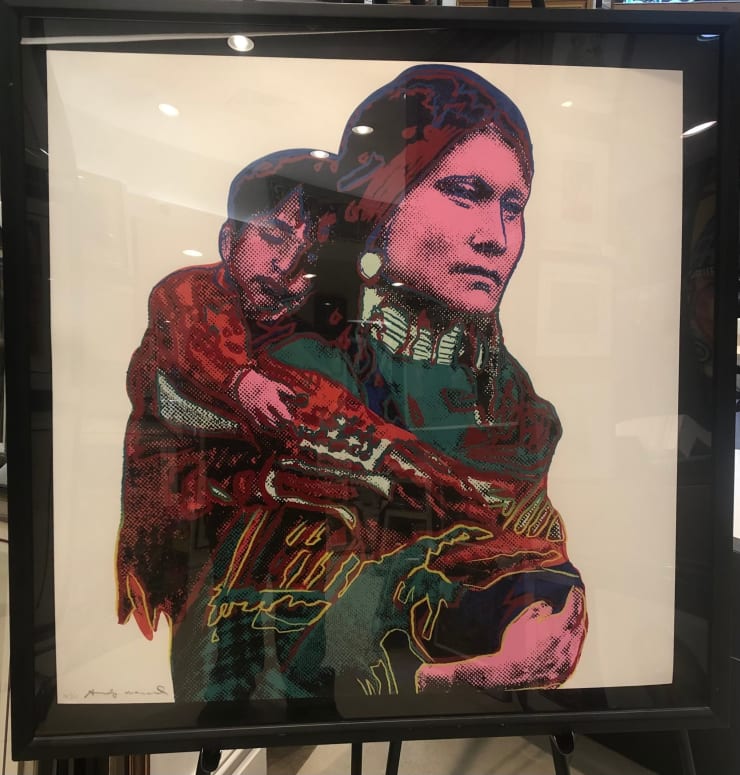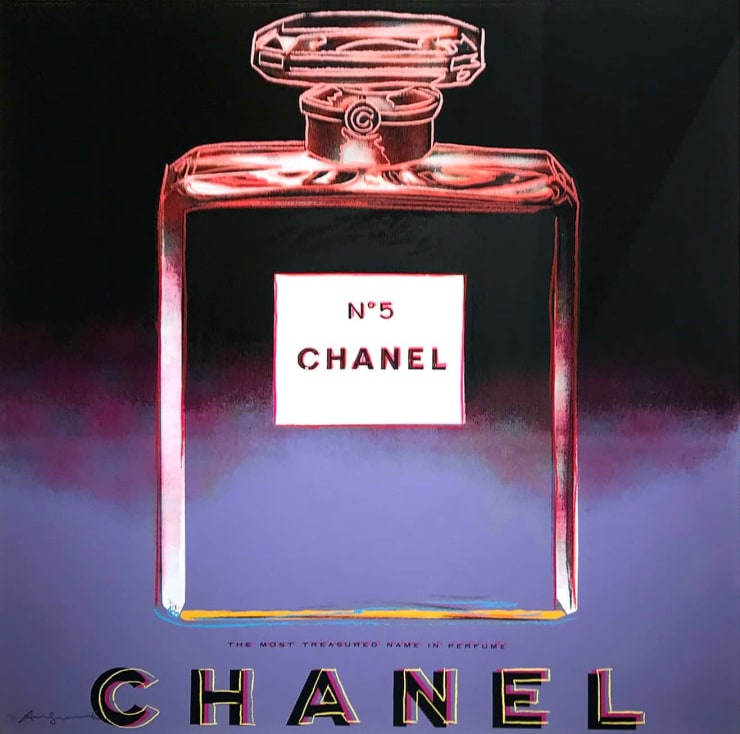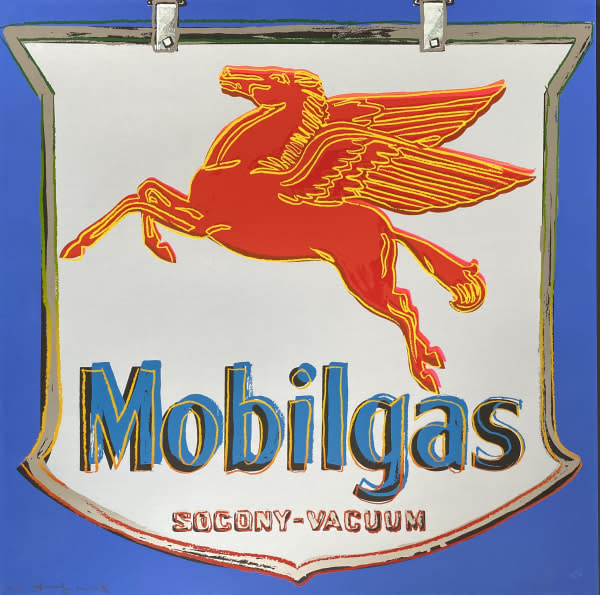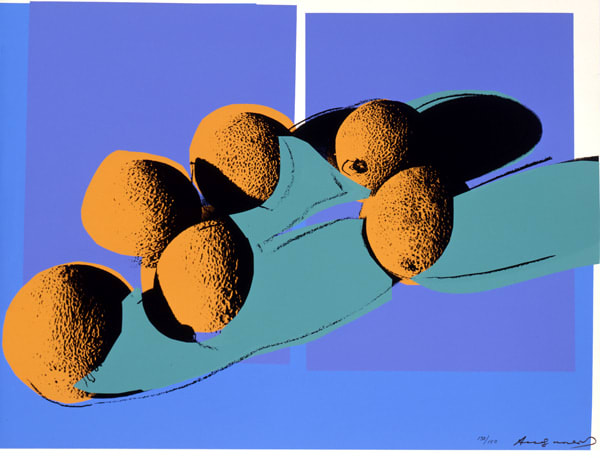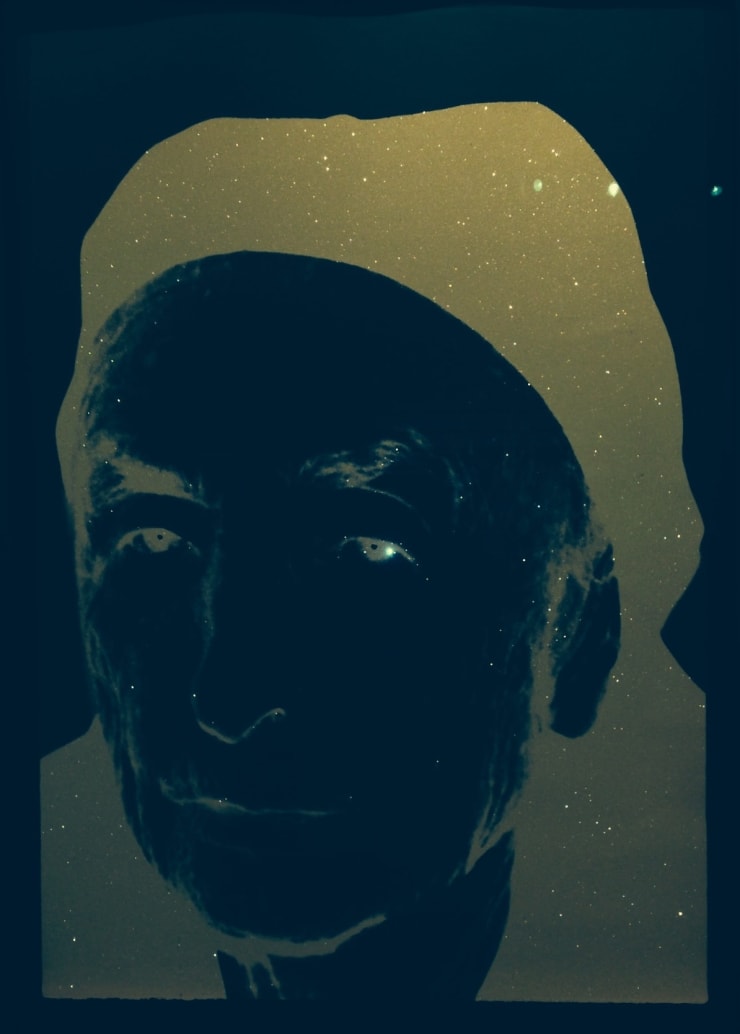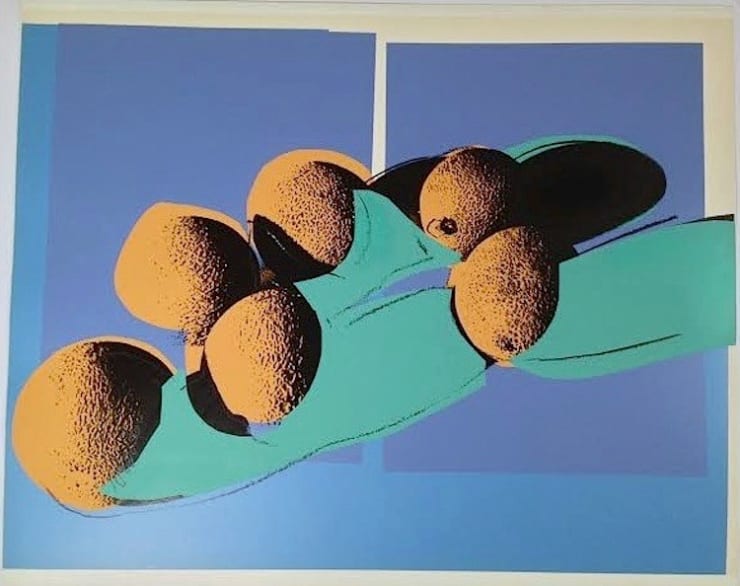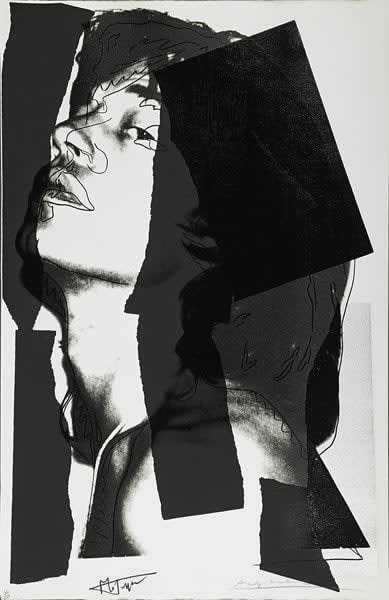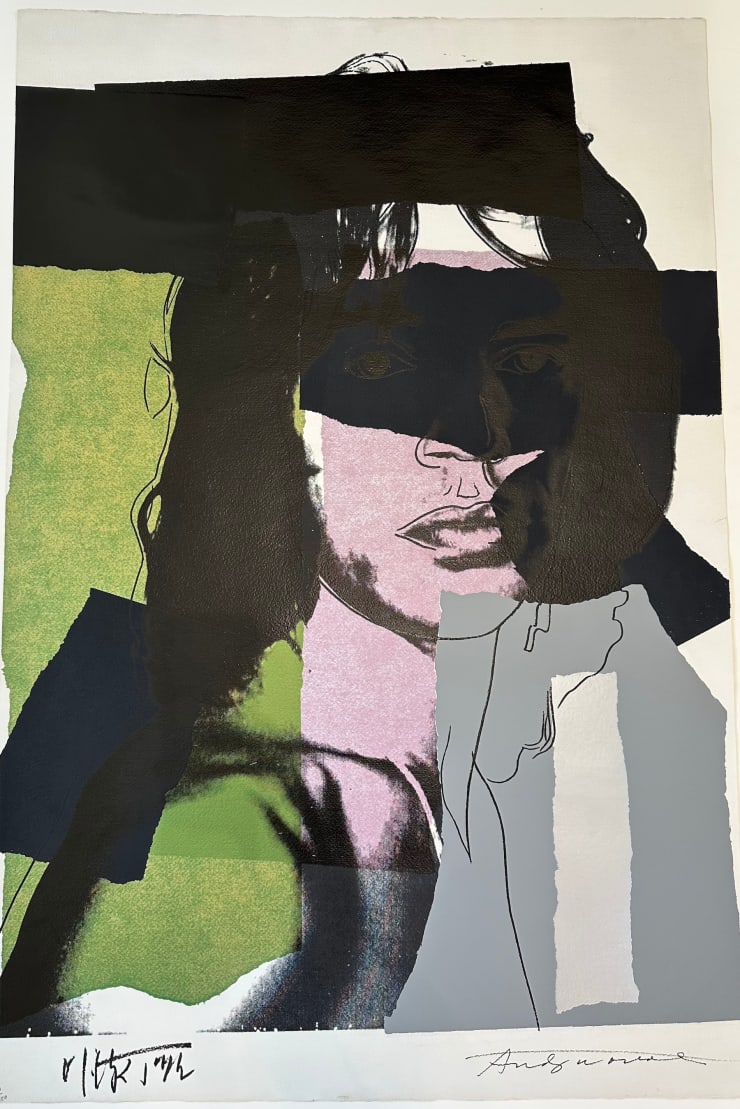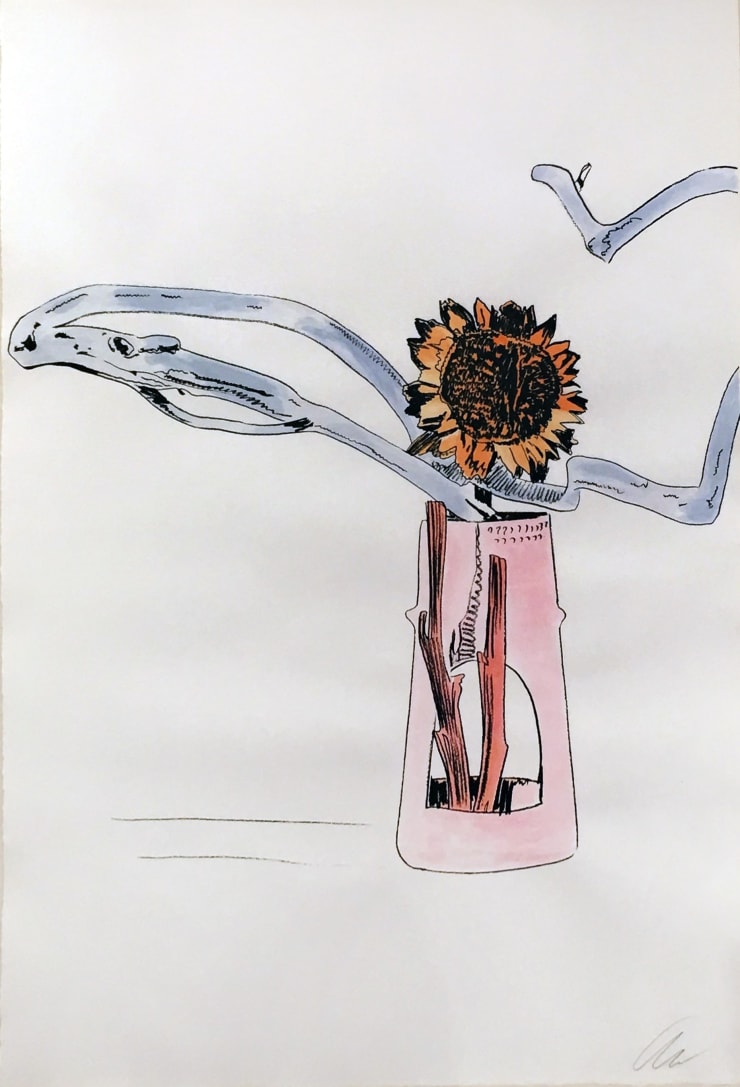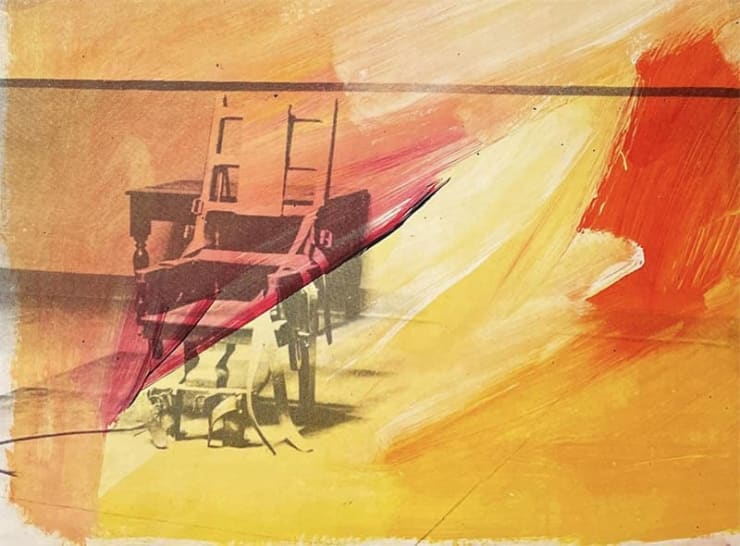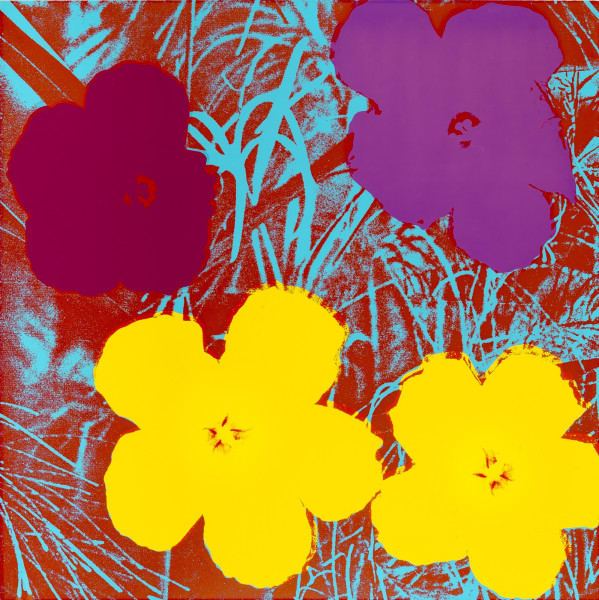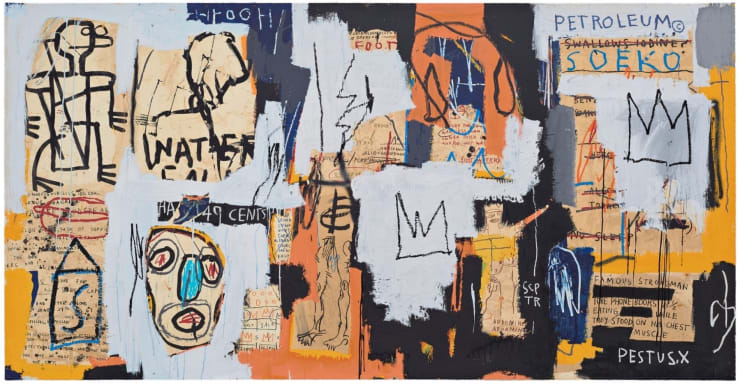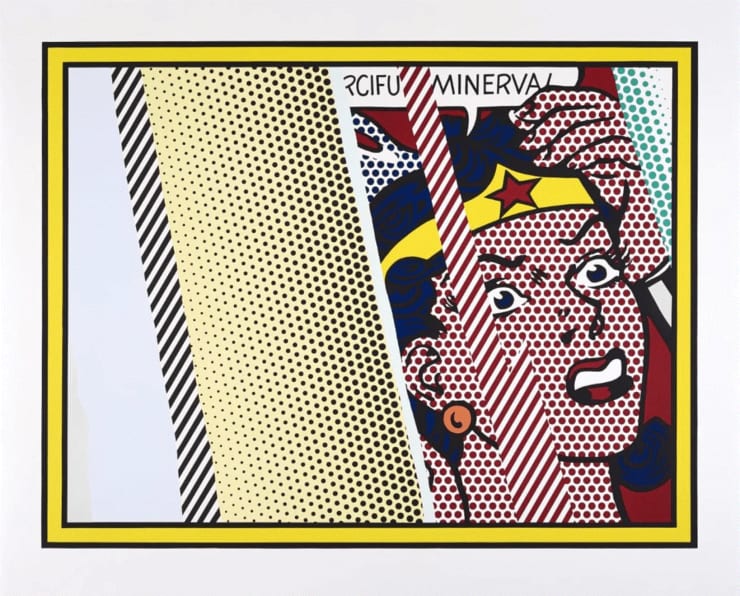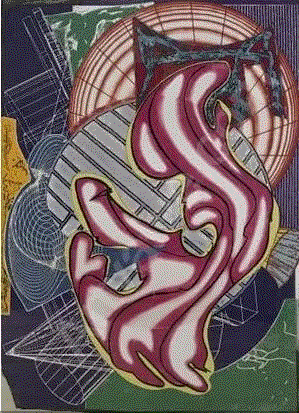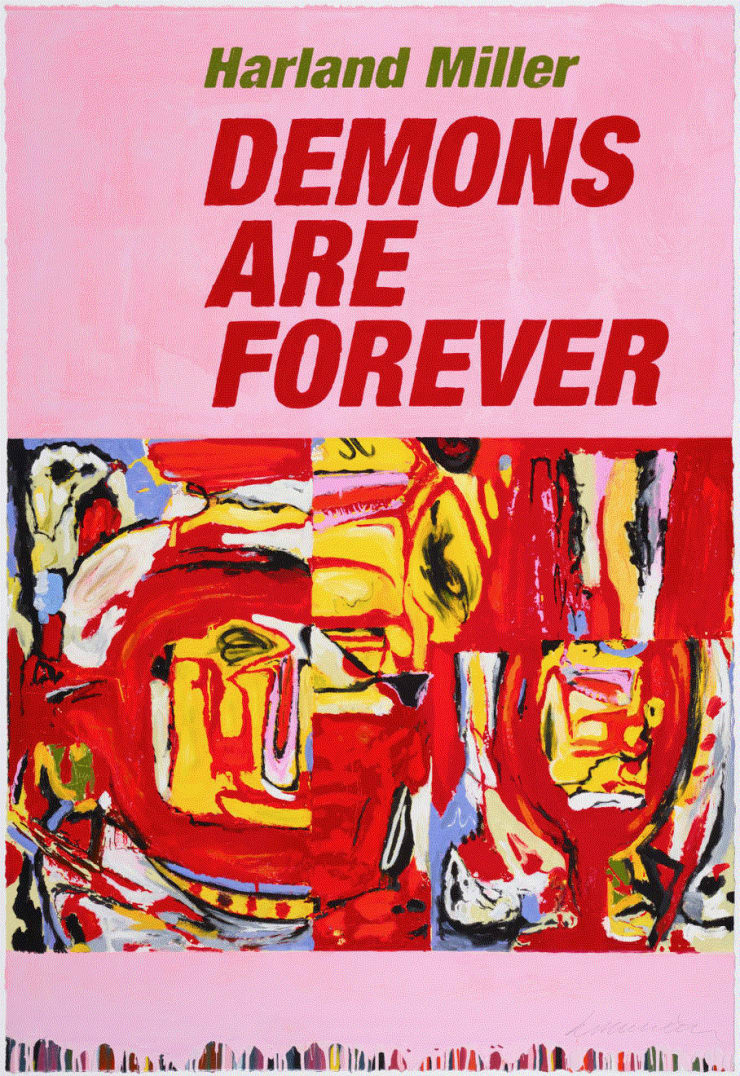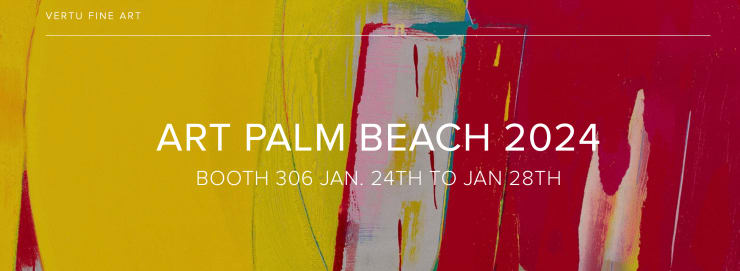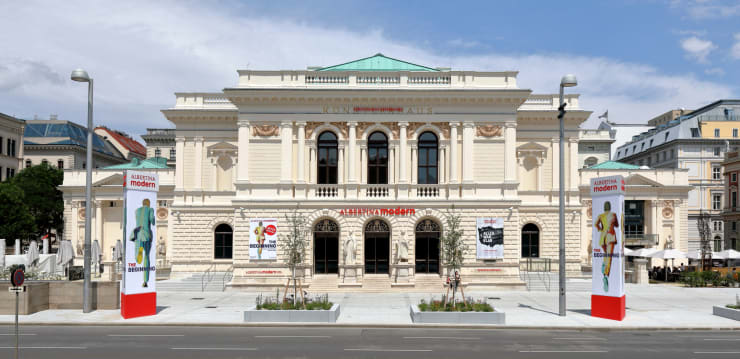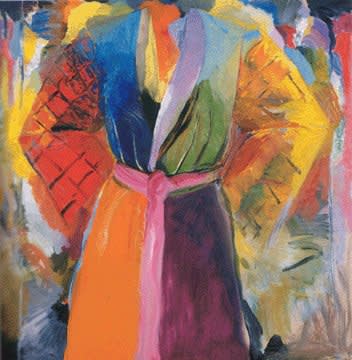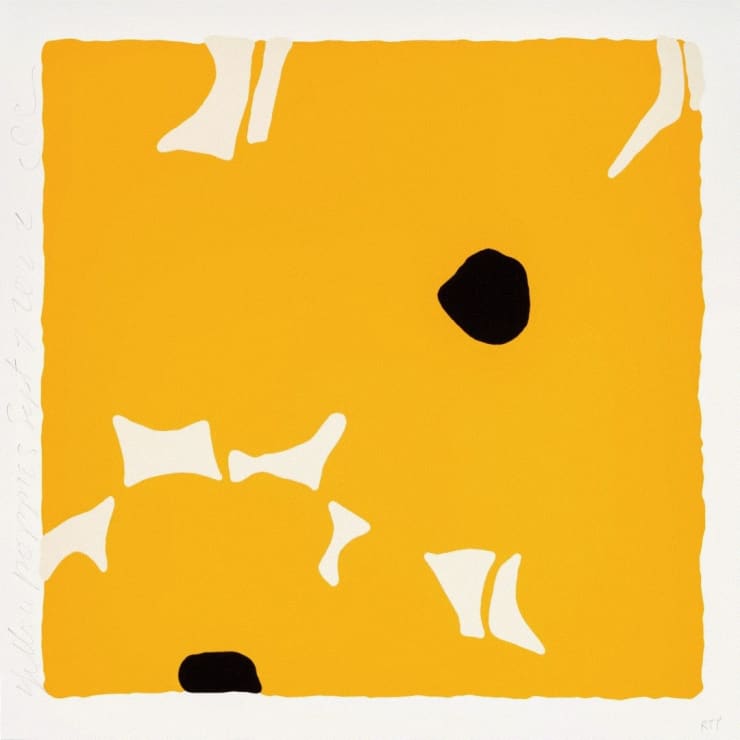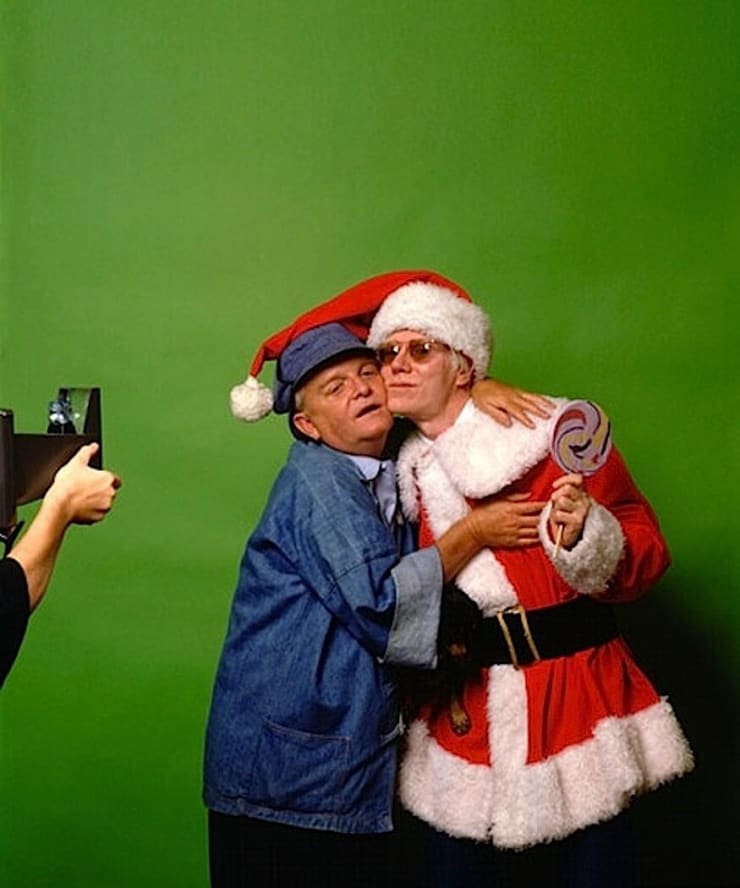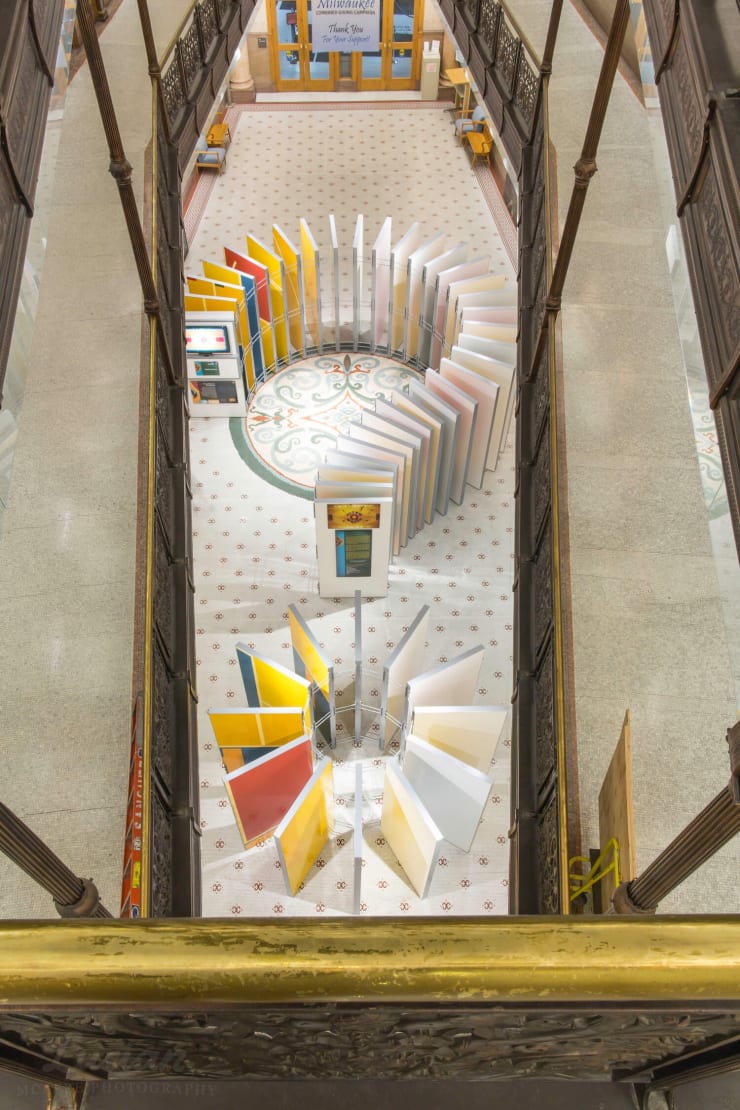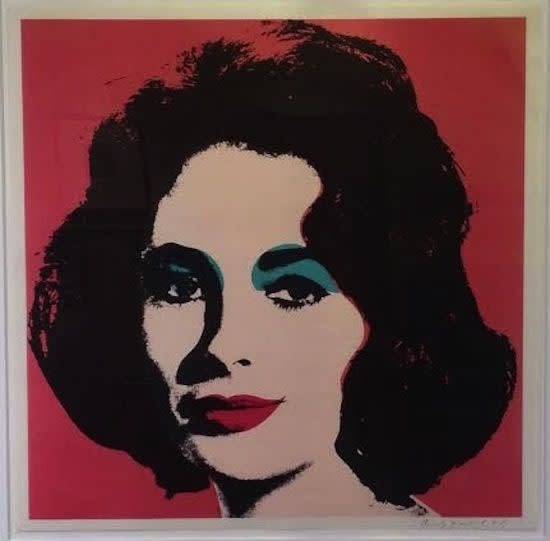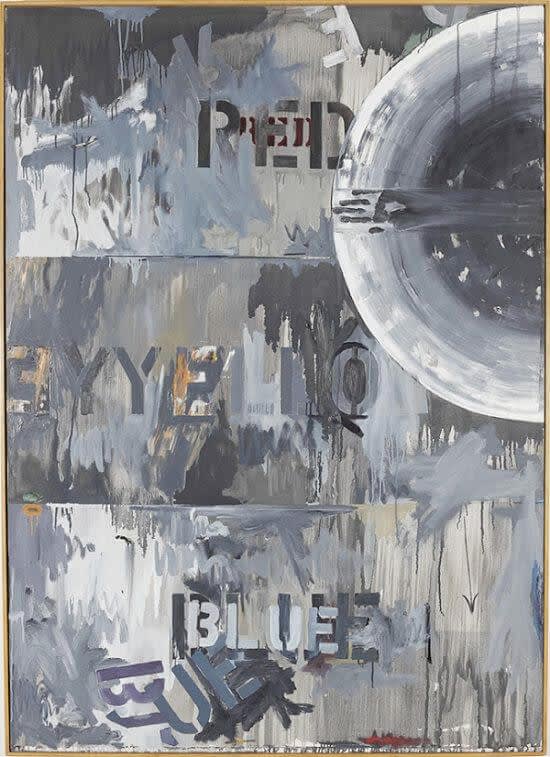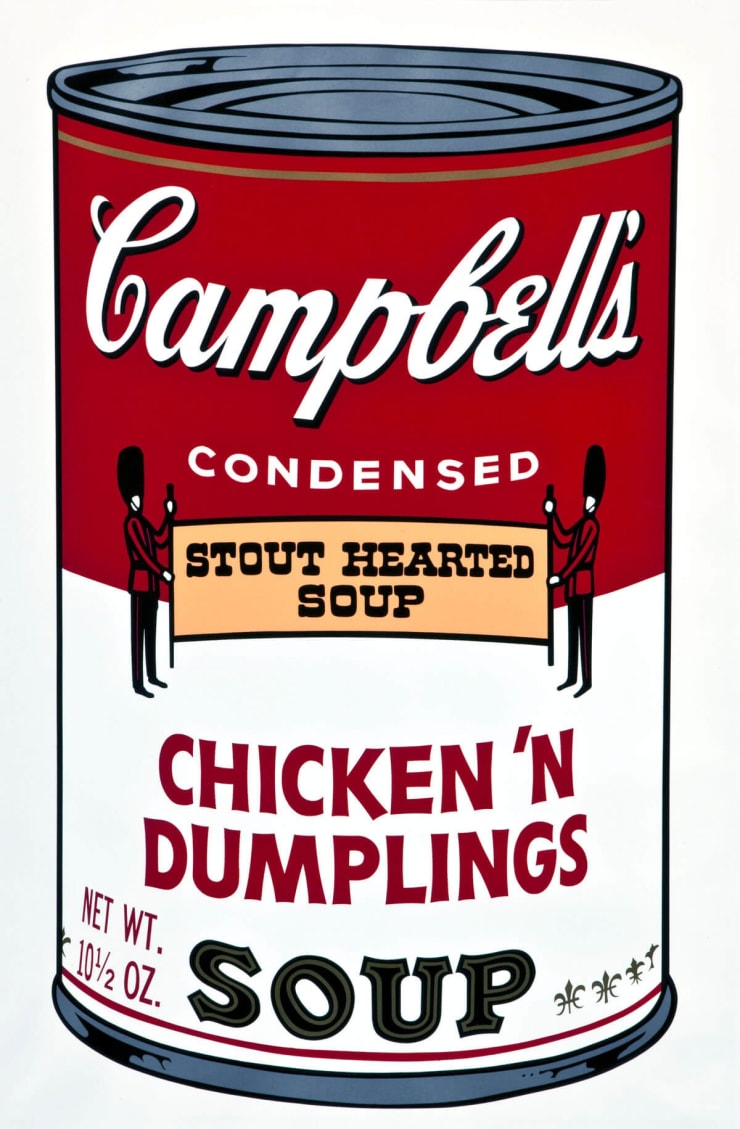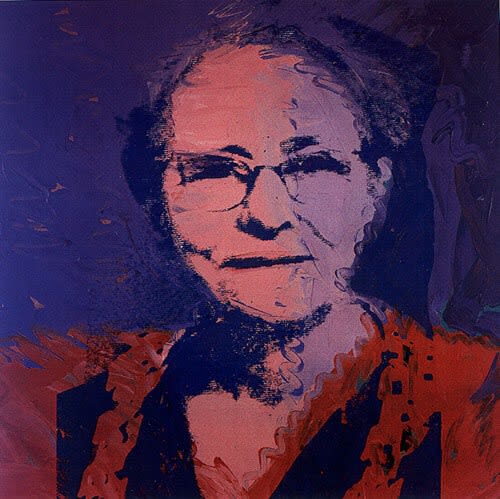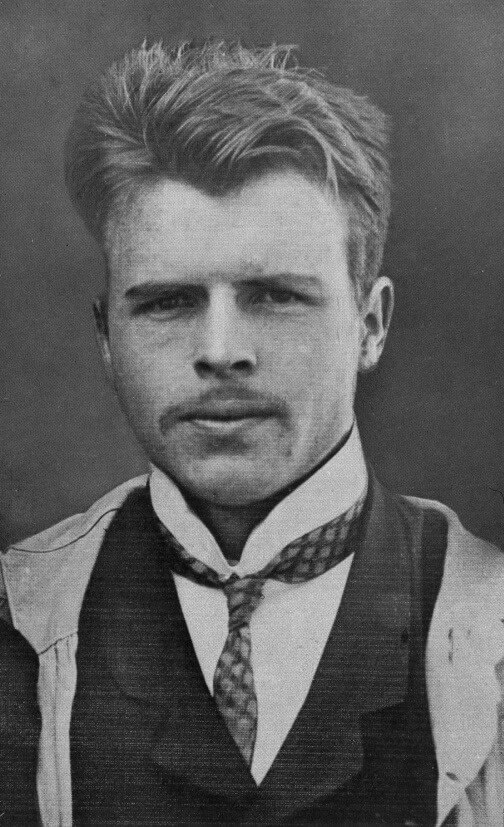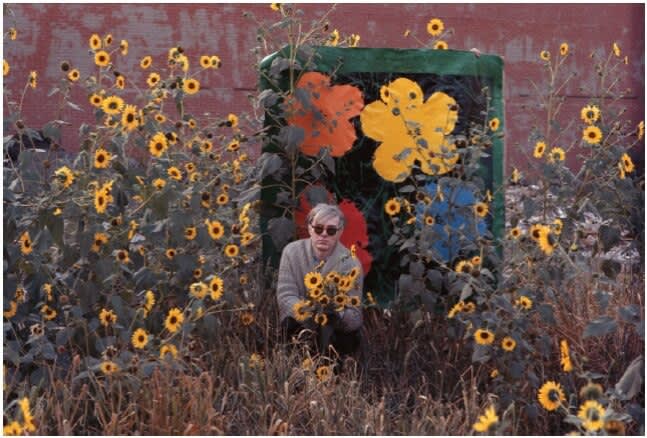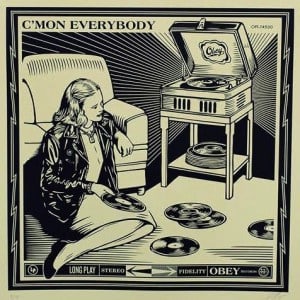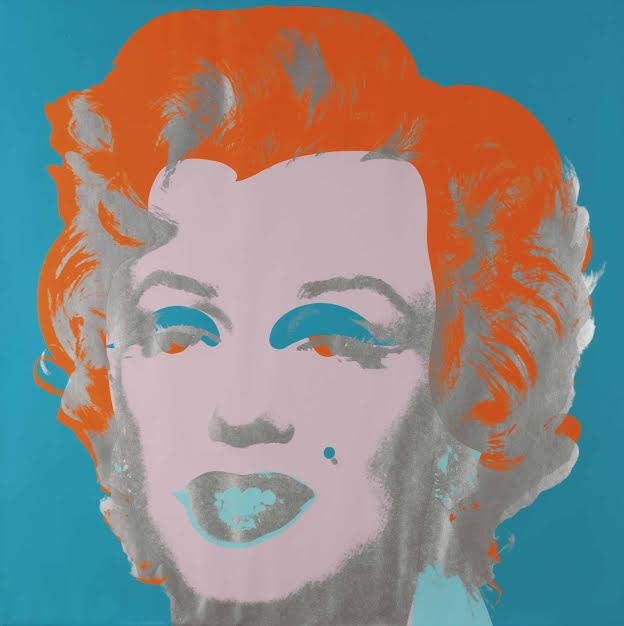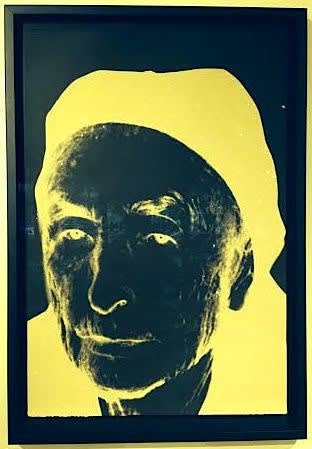Andy Warhol
-
 Andy WarholBeethoven Trial Proof F&S IIB.390-393, 198772 Unique Trial Proofs40 x 40 in
Andy WarholBeethoven Trial Proof F&S IIB.390-393, 198772 Unique Trial Proofs40 x 40 in
101.6 x 101.6 cmSigned and Dated in pencil -
 Andy WarholAnnie Oakley II.378, 1986Screenprint On Lennox Museum Board36 x 36 ins 91.44 x 91.44 cm
Andy WarholAnnie Oakley II.378, 1986Screenprint On Lennox Museum Board36 x 36 ins 91.44 x 91.44 cm -
 Andy WarholGeneral Custer II.379, 1986Screenprint On Lennox Museum Board36 x 36 ins 91.44 x 91.44 cm
Andy WarholGeneral Custer II.379, 1986Screenprint On Lennox Museum Board36 x 36 ins 91.44 x 91.44 cm -
 Andy WarholMother and Child (II.383) From cowboys and Indians, 1986Screenprint on Lennox Museum board36 x 36 in
Andy WarholMother and Child (II.383) From cowboys and Indians, 1986Screenprint on Lennox Museum board36 x 36 in
91.4 x 91.4 cmHC 13/15Signed and numbered -
 Andy WarholChanel no. 5 from Ads Series, (F.S.II354, 1985Color Screenprint on Lenox Museum Board38 in x 38 inEdition of 190 (PP 4/5)This work is hand signed by Andy Warhol (Pennsylvania, 1928 - New York, 1987) in pencil in lower left.
Andy WarholChanel no. 5 from Ads Series, (F.S.II354, 1985Color Screenprint on Lenox Museum Board38 in x 38 inEdition of 190 (PP 4/5)This work is hand signed by Andy Warhol (Pennsylvania, 1928 - New York, 1987) in pencil in lower left. -
 Andy WarholMap of Eastern USSR Missile Bases (Negative),, 1985synthetic polymer and silkscreen ink on canvas16 x 20 in
Andy WarholMap of Eastern USSR Missile Bases (Negative),, 1985synthetic polymer and silkscreen ink on canvas16 x 20 in
40.6 x 50.8 cmAuthenticated on the Verso
Series: Late Paintings -
 Andy WarholMobil (FS.II350), 1985Screenprint in colors on Lenox Museum Board38 x 38 in
Andy WarholMobil (FS.II350), 1985Screenprint in colors on Lenox Museum Board38 x 38 in
96.5 x 96.5 cmEdition of 190From the Ads Portfolio. Hand signed and numbered in pencil lower right and two blindstamps lower left. Verso copyright stamp and publishers stamp. Printer Rupert Jasen Smith, New York. Publisher Ronald Feldman Fine Arts, Inc. New York. Andy Warhol Prints Catalogue Raisonne 1962-1987 Feldman/Schellmann Fourth Edition II.350. -
 Andy WarholGrace Kelly. F&S ll.305, 1984Scrrenprint on Lenox Museum Board40 x 32 ins 101.6 x 81.28 cmEdition of 200signed and dated by the artist
Andy WarholGrace Kelly. F&S ll.305, 1984Scrrenprint on Lenox Museum Board40 x 32 ins 101.6 x 81.28 cmEdition of 200signed and dated by the artist -
 Andy WarholGrace Kelly. F&S ll.305, 1984Scrrenprint on Lenox Museum Board40 x 32 ins 101.6 x 81.28 cm
Andy WarholGrace Kelly. F&S ll.305, 1984Scrrenprint on Lenox Museum Board40 x 32 ins 101.6 x 81.28 cm -
 Andy Warhol3- Folio Cover Sheets - Ads, Cowboys & Indians, Endangered Species, 1983-1986Screenprints on Lenox Museum Board38 x 38 ins 96.52 x 96.52 cm
Andy Warhol3- Folio Cover Sheets - Ads, Cowboys & Indians, Endangered Species, 1983-1986Screenprints on Lenox Museum Board38 x 38 ins 96.52 x 96.52 cm -
 Andy WarholAlexander the Great, 1982Screenprint On Lennox Museum Board40 x 40 ins 101.6 x 101.6 cm
Andy WarholAlexander the Great, 1982Screenprint On Lennox Museum Board40 x 40 ins 101.6 x 101.6 cm -
 Andy WarholDollar Sign (F&S II.276), 1982Screenprint on Lenox Museum Board19-5/8 x 15-5/8 inchesEdition of 60Signed and dated
Andy WarholDollar Sign (F&S II.276), 1982Screenprint on Lenox Museum Board19-5/8 x 15-5/8 inchesEdition of 60Signed and dated -
 Andy WarholJane Fonda II.268, 1982Screenprint on Lenox Museum Board39 1/2 x 31 1/2 in
Andy WarholJane Fonda II.268, 1982Screenprint on Lenox Museum Board39 1/2 x 31 1/2 in
100.3 x 80 cmPP 2/3Signed and numbered in pencil lower Left
Edition of 100 -
 Andy WarholCantaloupes l from Space Fruit, 1979Screenprint on Lenox Museum Board30 x 40 ins 76.2 x 101.6 cm149/150Hand Signed and numbered
Andy WarholCantaloupes l from Space Fruit, 1979Screenprint on Lenox Museum Board30 x 40 ins 76.2 x 101.6 cm149/150Hand Signed and numbered -
 Andy WarholGeorgia O'keefe, 1979Screenprint with diamond dust on Arches cover44 1/2 x 30 ins 113.03 x 76.2 cm
Andy WarholGeorgia O'keefe, 1979Screenprint with diamond dust on Arches cover44 1/2 x 30 ins 113.03 x 76.2 cm -
 Andy WarholSpace Fruit: Cantaloupes 1 (F&S ll.201), 1979Screenprint On Lenox Museum Board32 2/8 x 40 1/8 ins 81.92 x 101.92 cm
Andy WarholSpace Fruit: Cantaloupes 1 (F&S ll.201), 1979Screenprint On Lenox Museum Board32 2/8 x 40 1/8 ins 81.92 x 101.92 cm -
 Andy WarholMick Jagger (F&S ll.140), 1975Screenprint on Arches Aquarelle43 1/2 x 29 ins 110.49 x 73.66 cm
Andy WarholMick Jagger (F&S ll.140), 1975Screenprint on Arches Aquarelle43 1/2 x 29 ins 110.49 x 73.66 cm -
 Andy WarholMick Jagger (FS II.144), 1975Screenprint on Arches Aquarelle(rough) Paper43 1/2 x 29 in
Andy WarholMick Jagger (FS II.144), 1975Screenprint on Arches Aquarelle(rough) Paper43 1/2 x 29 in
110.5 x 73.7 cmAP 22/50signed in pencil lower left by Andy Warhol. signed in Green felt pen by Mick Jagger -
 Andy WarholMick Jagger (FS II.145), 1975Screenprint on Arches Aquarelle(rough) Paper43 1/2 x 29 in
Andy WarholMick Jagger (FS II.145), 1975Screenprint on Arches Aquarelle(rough) Paper43 1/2 x 29 in
110.5 x 73.7 cm60/250signed in pencil lower left by Andy Warhol. signed in Green felt pen by Mick Jagger -
 Andy WarholFlowers (hand colored), 1974hand-colored screenprint41 x 27 1/2 in.219/250Initialed on the front, A.W. Signed and numbered on the verso in pencil, Andy Warhol.
Andy WarholFlowers (hand colored), 1974hand-colored screenprint41 x 27 1/2 in.219/250Initialed on the front, A.W. Signed and numbered on the verso in pencil, Andy Warhol. -
 Andy WarholFlowers (hand colored), 1974hand-colored screenprint41 x 27 1/2 in.219/250Initialed on the front, A.W. Signed and numbered on the verso in pencil, Andy Warhol.
Andy WarholFlowers (hand colored), 1974hand-colored screenprint41 x 27 1/2 in.219/250Initialed on the front, A.W. Signed and numbered on the verso in pencil, Andy Warhol. -
 Andy Warhol"Sunset", 1972Silkscreen on Lenox Museum Board34 x 34 in
Andy Warhol"Sunset", 1972Silkscreen on Lenox Museum Board34 x 34 in
86.4 x 86.4 cmStamped on verso "Hotel Marquette Editions" -
 Andy WarholElectric Chair (FS II.81), 1971Screenprint on paper35 1/2 x 48 in
Andy WarholElectric Chair (FS II.81), 1971Screenprint on paper35 1/2 x 48 in
90.2 x 121.9 cm130/250This work is hand signed by Andy Warhol in ball-point pen on verso. -
 Andy WarholFlowers (FS.II.71), 1970Screen print in colors on wove paper36 x 36 in
Andy WarholFlowers (FS.II.71), 1970Screen print in colors on wove paper36 x 36 in
91.4 x 91.4 cmEdition of 250signed in black ball point pen on the verso, stamp numbered. -
 Andy WarholCampbell's Soup / Pepper Pot F&S ll.51, 1968Screenprint35 x 23 ins 88.9 x 58.42 cm
Andy WarholCampbell's Soup / Pepper Pot F&S ll.51, 1968Screenprint35 x 23 ins 88.9 x 58.42 cm -
 Andy WarholPortrait of the Artists from Ten from Leo Castelli (F&S 17), 1967Screenprint On 100 Polystyrene Boxes In Color20 x 20 ins 50.8 x 50.8 cm
Andy WarholPortrait of the Artists from Ten from Leo Castelli (F&S 17), 1967Screenprint On 100 Polystyrene Boxes In Color20 x 20 ins 50.8 x 50.8 cm -
 Andy WarholPortrait of the Artists from Ten from Leo Castelli (F&S 17), 1967Screenprint On 100 Polystyrene Boxes In Color20 x 20 ins 50.8 x 50.8 cm
Andy WarholPortrait of the Artists from Ten from Leo Castelli (F&S 17), 1967Screenprint On 100 Polystyrene Boxes In Color20 x 20 ins 50.8 x 50.8 cm -
 Andy WarholS & H Greenstamps, 1965Offset Lithograph23 x 24 ins 58.42 x 60.96 cm
Andy WarholS & H Greenstamps, 1965Offset Lithograph23 x 24 ins 58.42 x 60.96 cm
American Artist Andy Warhol changed the world of Contemporary Art and American culture immeasurably. "15 minutes of fame" − a term that has become common speak for describing celebrity shelf life is one famous example. The saying derives from Andy Warhol's declaration made in 1968, when he simply stated, "In the future, everyone will be world-famous for 15 minutes." The statement carried weight because Andy had gained worldwide fame during the same decade. The shy artist from Pittsburgh had transcended from his success as a New York commercial artist to a Pop Art icon, in a short span of time.
In 1962, Andy Warhol rose to fame largely due to the popularity of his Campbell's Soup Cans painting. His paintings of Coca Cola bottles, various consumer goods and celebrities would earn him notoriety as well and set the tone for the American Pop Art movement. Andy's art struck a chord with the public − in a big way. His fascination of all things mundane and grand said much about the American experience. Warhol's art was immediately easy to understand and accessible. It was art for the masses.
Andy's style of repeating images seemed to capture the escalating bombardment of commercial messaging within the American landscape. Packaged goods and super-sized celebrities were suddenly omnipresent. Billboards, print ads an electric media were at a fever pitch compared to just a handful of years previous.
THE ANDY WARHOL PERSONA
Aside from his artistic talents, Andy Warhol had something else going for him. As an odd sort of character - shy, yet manipulative, Andy himself was a piece of work. Drawing on his own feelings of being different and an outcast allowed Warhol to be an objective onlooker. He could paint with a removed coolness and flatness, because that affect is part of who Andy really was. Andy Warhol also embraced a similarity between his own separation from the masses and that which movies stars and other celebrities endured. The media magnifies the traits of celebrities, leading the public to embellish such attributes. Warhol exaggerated his own oddities, presenting himself as a shy character worthy of intrigue and bewilderment - and it worked!
ANDY WARHOL'S SILKSCREEN TECHNIQUE
Warhol was visionary in his understanding that Pop Art could be mass produced to make it more readily available to a larger audience. Motivated by a desire to grow his popularity and increase his production, Warhol sought to increase his productive capabilities, which would allow his art to become more commercially available at the same time. Silkscreen process provided the answer. It also provided spectacular opportunities to create visually stunning mixed media representations.
For Andy Warhol, the death of Marilyn Monroe in August of 1962 proved to be a catalyst for the artist's foray into using a silkscreen to achieve profound results. Using a single photograph of Marilyn, a publicity photo for the 1953 film Niagara, which Warhol purchased from the movie studio, he employed silkscreen techniques to replicate the image with varying colors, saturations and imperfections. The results proved to be astounding.
Marilyn Diptych was produced by Andy Warhol during the same month that the actress suddenly died. The piece, containing 25 colored images on the left and 25 black and white images on the right, remains one of the artist's most popular works. For a stunned public at time of Marilyn's passing, this piece seemed to suggest so much. One obvious interpretation is that the colored side represents the vibrant life of the actress and right side suggests the starker reality of her life's story. The silkscreen affectations work to perfection in this piece as well. There's the supersaturation of color calling out the attributes of hair, eyes and lips. The blurring and fading of the right side of the work speaks volumes about the trauma, tragedy and fading of life.
Empowered by the ability to more quickly reproduce images, Andy Warhol was energized to create multiple varieties of this iconic Marilyn image. In fact, the newfound ability to quickly reproduce freed up Warhol to become prolific in developing works with repetitive subjects, a style that has become synonymous with the artist's name. Repeating images worked well in sync with the Pop Art vernacular, suggesting the repetitive nature of commercial advertisements.
ANDY WARHOL'S CELEBRITIES
The success of the Marilyn Monroe paintings brought the realization that celebrities, an obvious lightning rod for the public's attention, would become staple subjects for Warhol's Pop Art. Over the years, Andy Warhol created a number of iconic portraits of celebrity subjects, showing them in the artist's signature style. Elizabeth Taylor, Jacqueline Kennedy, Elvis Presley and Marlon Brando would all be immortalized by Warhol in the year's following the first series of Marilyn Monroe portraits.
Warhol's celebrity portraits became so popular that by the 1970s, celebrities such as Mick Jagger, John Lennon, Liza Minnelli, Diana Ross and Brigitte Bardot commissioned Andy Warhol to capture their essence in his famous style.
THE FACTORY
Andy Warhol's studio in midtown Manhattan was named The Factory, alluding to the industrial look, feel and intention of the space. The Factory became ground zero for Andy to create, collaborate and socialize. Warhol collected people at his famous studio - celebrities, fellow artists and assorted participants, including some he dubbed, "superstars." The Factory added to the Warhol mystique and placed Andy at the center of happening New York City Pop Art scene. Stories circulated of the unique social gatherings and of the film, photography and mixed media experiments created in this fertile art space. It all contributed to the allure of The Factory.
On June 3rd, 1968, a radical feminist writer named Valerie Solanas shot Andy Warhol and Mario Amaya, an art critic and curator, at The Factory. Solanas, who was a fringe member of the scene at the studio, was upset over being turned away from The Factory earlier that day, when she attempted to retrieve a script she left in the possession of Warhol, which had gone missing. Andy survived the shooting, but the event left him with injuries that would burden him for the rest of his life. The shooting understandably had an altering affect on the experimental nature of who was to be provided access to the studio.
Originally located on the fifth floor at 231 E. 47th Street, the studio was moved in 1968 to Union Square West near E.16th Street. The studio moved once more in 1973 to 860 Broadway, north corner of Union Square
-

Vertu Fine Art at Art Miami 2025
Booth AM215 through December 7 December 4, 2025This has been a spectacular week in South Florida. Art lovers from all over the world have gathered here for Art Week and visited with...Read more -

Art Miami 2025
December 2 - 7 Booth AM215 November 26, 2025We hope you can join us at the 35th edition of Art Miami 2025, the city’s original and longest-running modern and contemporary art fair. The...Read more -

Vertu at Art Miami 2025
December 2 through December 7 November 19, 2025We’re getting ready for an exciting exhibit at this year’s Art Miami - the original and longest running contemporary art fair and second most attended...Read more -

Basquiat Way in NYC. Odili Donald Odita Sculpture in Philly
Missing Picasso Found in Madrid October 28, 2025I don’t think about art when I’m working. I try to think about life. - Jean-Michel Basquiat On Tuesday, October 21st, a street sign that...Read more -

Donald Sultan's Work at the American University Museum
Alex Katz, Ada...and Christopher Walken October 15, 2025After the exploration of painting the art of printmaking becomes the final chapter of the artist process. Our role is to facilitate this process organically,...Read more -

The Mystery of Andy Warhol
The Impact of Tom Wesselmann August 21, 2025Art critics, art historians, filmmakers, documentarians and art curators have been examining the life and persona of Andy Warhol for decades. An exhibit, curated by...Read more -

Celebrating Robert Rauschenberg's Centennial
August 1, 2025Robert Rauschenberg (1925-2008) would have been 100 years old on October 22, 2025. Museums around the world are planning exhibits to celebrate Rauschenberg’s centennial. The...Read more -

Hamptons Fine Art Fair 2025
Join us at the Southampton Fairgrounds from July 10 - 13, 2025 July 8, 2025We hope you can join us this weekend at the 19th Edition of the Hamptons Fine Art Fair (HFAF). We are featuring a selection of...Read more -

Jean-Michel Basquiat: Remastered
June 25, 2025I cross out words so you will see them more….the fact that they are obscured makes you want to read them. - Jean-Michel Basquiat The...Read more -

Recent Acquisitions at VFA: The Photographs by Daisy Seilern
Featured artists at the Hamptons Art Fair June 18, 2025It is not about the destination, it is about the journey. You never stop learning because life never stops teaching. - Daisy Seilern Recently acquired...Read more -

On Board with Andy Warhol
June 4, 2025It’s been 38 years since Andy Warhol died, at age 58, after undergoing gallbladder surgery. In the years following his death, the interest in his...Read more -

The Good Business of Andy Warhol's Screenprints
Bobby Grossman's Photos of Warhol at VFA May 15, 2025An exhibit at the Andy Warhol Museum explores the artist’s extensive use of screenprinting. Warhol generated thousands of screenprints during his career, both at The...Read more -

Recent Acquisitions: Works by Tom Wesselmann
Picasso Exhibit Curated by Paloma Picasso May 1, 2025Tom Wesselmann (1931-2004) said that he wanted 'to make figurative art as exciting as abstract art.” He succeeded. Wesselmann began his career as a cartoonist...Read more -

The Work of Donald Sultan, Mel Bochner and more...
VFA at the Palm Beach Modern + Contemporary Art Fair March 19, 2025There is both strength and softness in the art of Donald Sultan (b.1951), just as there is strength and softness in the artist himself. Sultan...Read more -

Odili Donald Odita: A Survey of Context on View at the Hyde Collection
Works by Andy Warhol on Exhibit in NY and, soon, in Madrid February 4, 2025I have always said that to be a good teacher is to be a better artist. This is how I want to help them see:...Read more -

Matisse and More at the Expanded AGB Museum in Lakeland
Alexander Calder: Solid Gold January 22, 2025What I dream of is an art of balance, of purity and serenity, devoid of troubling or depressing subject-matter, an art which could be for...Read more -

Derrick Adams Homage to Tom Wesselmann
Alex Katz: Theater and Dance in Naples December 11, 2024Brooklyn-based artist, Derrick Adams (b.1970) was one of the many artists who showed up for Art Week Miami. During an interview at the Miami Beach...Read more -

VFA at Art Miami 2024
December 4, 2024Art Miami 2024 is on. The energy and excitement of visitors viewing the works of modern and contemporary art from international galleries is exhilarating. Featured...Read more -

The Works of Javier Callejo and Richard Serra on Exhibit in New York
Just Released: Julia Warhol's Biography November 19, 2024Until a few years ago, Spanish artist Javier Calleja (b.1971) was teaching art to earn a living and worked in a very small studio, with...Read more -

Featured & Favorite Artists at VFA
September 3, 2024This past weekend was an exciting one in New York for art enthusiasts. Art on Paper 2024 , was held during Armory Art Week, celebrating...Read more -

The Legacy of Dorothy Lichtenstein (1939-2024)
July 16, 2024Dorothy Lichtenstein, Roy Lichtenstein’s widow, died on July 4 at her home in Southampton, New York. The cause of death was reportedly heart failure after...Read more -

Remembering Frank Stella (1936-2024)
May 9, 2024Frank Stella died on Saturday, May 4, at the age of 87. He changed the way the world views art, creates art and defines art....Read more -

Carmen Herrera at the Venice Biennale
Keith Haring Mural at the Stanley Museum May 1, 2024For the first time in history, a work of Carmen Herrera (1915-2022) is on exhibit at the Venice Biennale. The Cuban-born American artist painted in...Read more -

VFA at the Palm Beach Modern + Contemporary Art Fair
March 20, 2024This weekend’s Palm Beach Modern + Contemporary Art Fair promises to be an exciting event. Our focus, as always, is on those artists whose skill...Read more -

VFA at the Palm Beach Modern and Contemporary Art Fair
March 21-24 at the Palm Beach Convention Center March 14, 2024The Palm Beach Modern and Contemporary Art Fair is being held at the Palm Beach County Convention Center on Friday, March 22 through Sunday, March...Read more -

The Works of Harland Miller and Andy Warhol at VFA
March 8, 2024There was a time when the publishers of Penguin Books thought about suing Harland Miller for using their cover design as the basis for his...Read more -

Recent Acquisitions: Works by Julian Opie, Harland Miller and Other Great Modern and Contemporary Artists
February 28, 2024With his simplified, signature style, Julian Opie (b.1958) has created computer animated figures that grace the streets of many European, Asian and American cities. Like...Read more -

LUNA LUNA in LA; Debbie Carfagno at VFA
January 31, 2024The works of some of the most playful Pop artists of the twentieth century were showcased at the Luna Luna carnival that opened in West...Read more -

Art Palm Beach 2024
January 24, 2024Art Palm Beach 2024 has been exciting to plan and, with more than eighty galleries from around the world exhibiting modern and contemporary art, it...Read more -

VFA at Art Palm Beach 2024
January 18, 2024Art Palm Beach is back! This year’s show will be held from January 24th to 28th at the Palm Beach County Convention Center. We’ll be...Read more -

Merry and Bright: Art for the Holidays
December 19, 2023David Hockney has always loved technology. He embraced the Polaroid camera when it first appeared, has been painting on his his iPad for years and...Read more -

VFA: The Excitement of Art Week 2023
December 6, 2023Miami is an exciting city, but everything gets ramped up and even more exciting during Art Week. The art, fashion, design, even the food, seems...Read more -

Flowers: The Softer Side of Andy Warhol
Warhol Foundation Plans $60 Million Pop District Expansion October 25, 2023If you want to know all about Andy Warhol, just look at the surface of my paintings and films and me, and there I am....Read more -

Andy Warhol: Cowboys and Indians at VFA
September 21, 2023In the 1980s, Warhol created several series of screenprints that focused on iconic themes. One was the Ads Series, created in 1985, that focused on the symbols of some of America’s major corporations like Disney, Apple and Volkswagen. It was actually Steve Jobs who introduced Warhol to the computer. Jobs brought a Mac to a party at John Lennon and Yoko Ono’s home and showed Warhol how to use the pencil tool to draw. Warhol got his own computer in 1986, just a year before he died.Read more -

Yoshitomo Nara and Roy Lichtenstein at Albertina Modern
VFA at Art on Paper September 7, 2023Many people say that these are children but I think these are not children that I paint. Therefore, they are no particular children but for...Read more -

VFA at Art on Paper, September 7-10 at Pier 36
August 31, 2023As the print evolves, it tells you, you tell it. You have a conversation with a print — Helen Frankenthaler, 1988 VFA will be part...Read more -

Jim Dine Examines Jim Dine; Keith Haring's Work at The Broad
VFA at the Hamptons Fine Art Fair This Weekend July 12, 2023I have come to terms with a lot of things, because, when it’s all said and done, there’s really very little one can do about...Read more -

VFA at the Hamptons Fine Art Fair, 2023
July 5, 2023We’re looking forward to another wonderful edition of the Hamptons Fine Art Fair. This year’s Fair begins with a private viewing on Thursday, July 13th...Read more -

Remembering Julia Warhola, Andy Warhol's Mother
Happy Mother's Day May 10, 2023Family played an important role in the life of Andy Warhol . His two older brothers were very protective of him. Middle brother, John, made...Read more -

Yoshitomo Nara Garnering Gen Z Audience. Continued Fascination with Warhol-Basquiat Collaboration
May 2, 2023The images that Yoshitomo Nara creates are both cute and cunning, innocent and angst-filled. The images, with large, trusting eyes, often holding weapons, have created a new Gen Z audience, that relate to the complex feelings that Nara’s work evokes. Young people, who experienced the angst of the pandemic, discovered his art and have been sharing Nara’s images on TikTok and other social media sites.Read more -

VFA at The Palm Beach Modern + Contemporary International Fair
March 21, 2023Vertu Fine Art will be at the Palm Beach Modern + Contemporary International Fair held at the Palm Beach Convention Center from March 23 through March 26, 2023. This is the sixth edition of of South Florida’s most celebrated winter art fair.Read more -

The Restoration of Luna Luna, Banksy's Stamp for Ukraine
March 8, 2023In 1987 the Luna Luna amusement park opened in Hamburg, Germany. The park was created by Austrian artist, Andre Heller. His vision was to get...Read more -

Vert Fine Art at Art Market Hamptons 2022
August 8, 2022VFA at Art Market Hamptons 2022 New prints by Alex Katz and Kenny Scharf are among the works that we will be exhibiting at the...Read more -

The Collaboration: Andy Warhol and Jean-Michel Basquiat
July 11, 2022The art of Andy Warhol has been an exciting part of our fine art print collection at VFA. We have always appreciated his great style and masterfully done prints. We took for granted that the rest of the world knew and appreciated them, as well. The life and art of Andy Warhol has gotten increased attention recently. Every aspect of his life is explored in the Netflix docuseries The Andy Warhol Diaries. The documentary uses an AI voice to read the notes that Warhol dictated every day to his friend, Pat Hackett, for about a decade.Read more -

Warhol’s Shot Sage Blue Marilyn Sets New Auction Record
May 9, 2022Andy Warhol 1928-1987 Andy Warhol’s Shot Sage Blue Marilyn (1964) sold for $194 million at Christie’s New York on May 9. Bought by an unknown...Read more -

Roy Lichtenstein’s Studio Donated to the Whitney, Andy Warhol Heard with A.I.
February 28, 2022Roy Lichtenstein 1923-1997 The Roy Lichtenstein Foundation has donated the artist's former West Village studio to the Whitney Museum. The building will be renovated and...Read more -

VIPs at LA Frieze and more…
February 22, 2022VIPs at LA Frieze This year’s LA Frieze art fair opened with a special V.I.P Day, attended by such celebrities as Leonardo DiCaprio, James Corden,...Read more -

Andy Warhol: How He Saw Himself and Everyone Else
February 1, 2022Two shows at the Warhol Museum bridge the gap between the way Andy Warhol viewed himself and the way in which he viewed others. My Perfect Body just ended and Stars of the Silver Screen is coming this month.Read more -

The Influence and Legacy of Wayne Thiebaud
December 27, 2021Wayne Thiebaud, one of America's most beloved artists, best knows for his luscious paintings of cakes and pies, died at his home in Sacramento on Saturday, December 25th. He was 101 years old.Read more -

Vertu Fine Art at Miami Art Fair 2021
November 22, 2021We are pleased to announce that Vertu Fine Art will be exhibiting at the 31st Edition of Art Miami at the downtown Herald Plaza. The...Read more -

The Surprising Inspirations of Julian Opie and Andy Warhol
July 27, 2021The influence of Michael Craig-Martin, one of Julian Opie's instructors at London's Goldsmiths School of Art, is apparent.Read more -

Andy Warhol Exhibits in China and Russia; Jean-Michel Basquiat Exhibit in Chelsea
July 6, 2021In the early 1980s, Jean-Michel Basquiat was at the height of his career. Andy Warhol was experiencing a renewed burst of fame, after focusing on...Read more -

David Hockney, Andy Warhol, Julian Opie and Derrick Adams at VFA
May 10, 2021As part of a £7 million Let’s Do London campaign, the mayor of London commissioned David Hockney to create a sign for the Picadilly Circus tube station. Hockney reimagined the original red, white and blue sign with a whimsical, typical Hockney-eske iPad purple and yellow design. Social Media users went wild, making fun of the iPad drawing…and saying that they could do better.Read more -

Andy Warhol For the Holidays
Celebrating Andy Warhol at VFA December 17, 2018I have Social Disease. I have to go out every night. If I stay home one night I start spreading rumors to my dogs.” –...Read more -

Andy Warhol’s Santa Claus: Naughty and Nice
December 4, 2017The holidays were pretty meager for Warhol when he was a child, sometimes getting just an orange for Christmas. As Byzantine Catholics, the family celebrated Christmas on January 6, after all the hoopla had died down. As an adult, Warhol really got into the spirit of the holiday—which is all things Warhol relished; it's kitsch, commercial and personified by a Pop idol—Santa.Read more -

Robert Indiana: In Miami, Selling MECCA
September 7, 2017The works of Robert Indiana , and many other great mid-twentieth century artists, will be on display at the University of Miami's Lowe Art Museum...Read more -

Andy Warhol Art for Sale
August 1, 2016At Vertu, we aim to promote modern art by collecting a broad range of artworks from modern artists creating artworks in various styles. We enjoy...Read more -

Andy Warhol Art for Sale
August 1, 2016At Vertu, we aim to promote modern art by collecting a broad range of artworks from modern artists creating artworks in various styles. We enjoy seeing new prints by artists that take their inspiration from a wide range of cultural, philosophical and even political influences. But, of course, our gallery would not be complete without prints by the most infamous contributors to modern art, like Andy Warhol.Read more -

Andy Warhol Eating a Hamburger
June 17, 2016The scene is fascinating: Pop artist Andy Warhol sits at a table. In front of him, there’s a paper bag containing a regular meal from Burger King. Warhol takes the burger from its packaging and starts to eat it. For four minutes we watch him eating a burger, like any ordinary person would. Once Warhol finishes, he sits silently for a moment, as if he were deeply reminiscing what has just taken place, and then he finishes the scene by saying these words, “My name is Andy Warhol and I just finished eating a hamburger”.Read more -

Jasper Johns Prints for Sale
March 23, 2016He's painted a flag so you don't have to think of it as a flag but only as a painting' -Jasper Johns Jasper Johns has...Read more -

Andy Warhol Could Sell Shoes
March 9, 2016In 1980, Warhol created his Diamond Dust Shoes series. According to Warhol’s Interview magazine editor, Bob Colacello, the idea began when Victor Hugo, the partner...Read more -

Andy Warhol: The Signification of Soup
February 10, 2016Even for Andy Warhol collectors, who know his enormous body of work, it’s hard to separate Andy Warhol from Campbell’s Soup and almost impossible to walk down the soup aisle of a grocery store without making the connection. Could Warhol have painted a box of Wheaties or a pack of Lucky Strikes and gotten the same emotional response that he achieved with Campbell’s Soup Cans?Read more -

Three Big Influences on Andy Warhol
February 3, 2016Andy Warhol influenced the way we view art, fame and the commercial culture that we inhabit. The influences that turned Warhol from a sickly boy in Pittsburgh, into one of the most influential figures of the twentieth century, began at birth.Read more -

Symmetrical and Asymmetrical Art: Finding Balance
January 21, 2016Our brains are hard-wired to take comfort in symmetry and to look for balance in asymmetry. We humans are constantly looking at the world and trying to make sense of the things we see. We look for order, rather than chaos, in our world, and balance helps to turn that chaos into order. In 1921, Swiss psychiatrist, Hermann Rorschach (who, by the way, looked a lot like Brad Pitt), developed the inkblot Rorschach Test. He showed his patients ten symmetrical inkblots and asked them to tell him what they saw. He then used his patients’ responses as an analytical tool to assess their mental status.Read more -

Andy Warhol Lithographs: Flowers 1964 and Photos After
December 10, 2015Andy Warhol could easily have drawn hibiscus flowers, made a silkscreen and hung it at his first exhibition at the Leo Castelli Gallery at the end of 1964. He could have, but he didn’t. For Flowers, Warhol appropriated a photo of hibiscus flowers from the June 1964 issue of Modern Photography magazine. The photos were taken by Patricia Caulfield, the executive editor of Modern Photography. Caulfield threatened to sue Warhol, was offered, but declined, two sets of Flowers silkscreens, and agreed to a cash settlement instead.Read more -

The Spiritual Side of Andy Warhol
October 2, 2015Warhol was commissioned to create works, based on Last Supper, for an exhibit in the Palazzo Stelline in Milan across the street from the famous masterpiece. Warhol created a series of works, including a 32 foot long by 12 foot high Last Supper.Read more -

Cultural Icon: Andy Warhol
July 15, 2015Andy Warhol not only saw things differently than most, but his works forced the American public to look at things differently. Once Warhol’s 32 Campbell’s Soup Cans were displayed on the wall of a Los Angeles gallery in 1962, the country became plunged into a Pop Culture controversy that resulted in Warhol becoming the highest priced living artist of the 20th century.Read more -

Shepard Fairey’s Cautionary Tone Hits All The Low Notes
October 3, 2014A recently acquired Shepard Fairey serigraph , Endless Power , consistently puts smiles on the faces of viewers who appreciate the Pop Artist’s wry sense...Read more -

Transcendent Warhol Works for Sale at VFA
September 26, 2014When considering the appeal of Andy Warhol Prints , we think of the eccentric Pop Art trendsetter who forever changed the world with his manipulation...Read more -

Left Coast Pop Art: Ed Ruscha
March 12, 2014When most of us think of American Pop Art, we conjure images of the likes of Warhol, Lichtenstein, Haring and the New York Pop Art...Read more -

Andy Warhol’s Georgia O’Keeffe Portrait
February 16, 2014In 1979, the meeting of Pop Art icon Andy Warhol and another famous American artist, Georgia O’Keeffe, resulted in the Warhol production of a highly coveted series of diamond dust prints. At this point in time, when Georgia and Andy agreed to sit for one another, Ms. O’Keeffe had pretty much ceased her own creations, as her diminished eyesight had worsened and she was in her early nineties at the time. For Andy Warhol, despite meeting being a larger than life celebrity in 1979 and regularly meeting other celebrities – the opportunity to meet with Georgia O’Keeffe was still a big deal – as the two of them had solidified their positions at the top of the list of important American artists of the 20th century.Read more -

Keith Haring Art: Pop’s New Wave
June 7, 2013Keith Haring art is near and dear to us at Vertu Fine Art. Haring is an artist’s artist. Like Warhol , Lichtenstein and Johns, Keith...Read more




